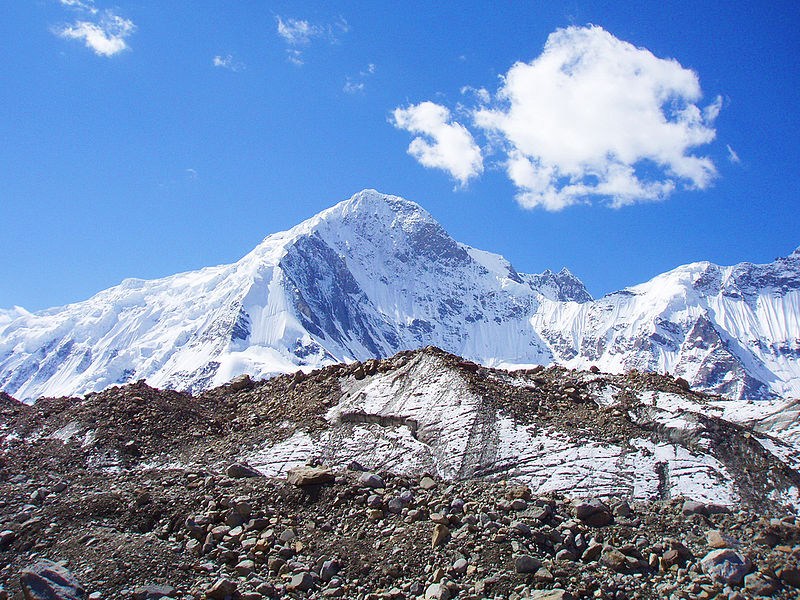We often wonder how impactful we are, and contemplate the futility and reversibility of our efforts when it comes to the environment. We lazily speculate if our volition can accomplish anything, in a lack of a coherent and collimated directive framework. Imagine, however, being able to impress a lasting impact on the terrain with a simplistic social custom. Imagine being able to modify the natural realm, customise the geological features in your vicinity, and alter resource patterns for the better, all in a matter of months.
When the mighty conqueror Genghis Khan stomped his way through Asia, in the early 13th century, he left a trail of destruction and overhaul in his wake. As the hooves of his undeterred army churned the vast steppes, no fortress, no wall, no barrier could hinder him. However, upon reaching the Hindu-Kush and Karakoram ranges, the soldiers finally had to tug at the reins of their steeds. His fearsome contingent’s dreaded march came to an abrupt halt. Facing them was a giant, daunting wall of ice.
The prospects of advancing were utterly hapless as the glaciers perfectly intercalated the mountain passes – the only passages through the string of mountain ranges that form a natural boundary to the Indian subcontinent. Try as he may, the Mongols knew the consolidated ice was impregnable – thick, towering, and wide. The Mongols reared back, steering clear of what is modern-day Gilgit-Baltistan. The Great Khan was, for the first time since the inception of his grand conquest, forced into a chagrin-laden retreat.
By all accounts, the glaciers seemed too precise to have been a natural phenomenon. As a result of the glacier, the Mongol empire’s southward conquest was nipped at the Northwestern part of the Indian subcontinent. It is said that the highland-dwellers in these regions, heard of an impending Mongol invasion, and sensing that the Khan was about to approach their lands in less than a year, erected a wall of ice, in a single winter. The history here relies on a shaky premise, and is invariably and perhaps inseparably entangled with local folklore. However, the ongoing culture of glaciers as a tradition in the region, strategic or otherwise notwithstanding, has been well-established.
The inhabitants of the frontier region of Gilgit-Baltistan in Northern Pakistan have been making use of artificial glaciers to cope with the scarcity of fresh water in the dry season. The glacial-melt is apportioned to meet both domestic, as well as agricultural needs. The region is situated at the juncture of three of the world’s loftiest mountain ranges – The Himalayas, The Karakoram, and the Hindu Kush. The practice, originally from the Karakoram area is said to have spread and been adapted to local quirks and circumstances in Tibet and Kashmir. Each region, from Pamir to Ladakh in India, has given unique forms to the glacier-growing technique, methodology, and morphology.
People in these regions personify and venerate glaciers, a testament to how important the latter is to them. Relatively mobile, fluid and light-coloured glaciers that readily release water are categorised as “female”, while darker-coloured, slower and firmer glaciers are labelled as “male”.
As is customary, a while before the winter, the denizens gather small fragments or “cultures”, from the two kinds of glaciers and lump them together. They deposit the samples at the suitable or requisite site (preferably one with less incident sunlight) and thermally insulate them with a protective case of materials like husk, charcoal, sand, gravel or twigs. They are then left in their marital isolation “to breed and proliferate”, undisturbed. This initial culture will serve as the basal core and will amass ice, providing a steady nucleus to build upon.
Each successive precipitation of snow adds a new layer to the existing ice bulk. When snow is consolidated by pressure under its weight (the weight of its overlying layers), it turns into hard, solid ice. The glacier sustains, as more snow is added than melts, and amasses over successive winters. Snowfall and consistently cold temperatures are required to build up lasting ice. The grafted “glacier-let” provides a stable form for the ice to agglomerate and deposit around, making it persistent throughout the seasons. Year-after-year the glaciers gain size, while what is melted is used by the locals.
Ladakh is a high-altitude cold desert located in Northern India, lying on the leeward side of the Himalayas, meaning the mountain’s hind side in direction of the approach of wind and clouds, resulting in a ‘rain shadow area’. It receives less than 10 millimetres of rain every year. Locals grow various kinds of glaciers in the region. Redirecting existent meltdown by using a combination of vertical and horizontal conveyor pipes, into pools and freezing them layer-after-layer is one way.
A civil engineer in Ladakh, Chewang Norphel observed that a slowed-down stream of water could freeze under the shade, while the rest of it flowed. He devised a method of diverting and impeding rivers at convenient places using locally-sourced non-intrusive check-dams, building more than a dozen massive artificial glaciers. Often pipes are used to spray out the melt upwards so that the water spontaneously freezes as it emanates and falls in a delayed trajectory. This results in what is known as ‘Ice-Stupas’. So-named after their shape bearing resemblance to Buddhist shrines, they are prevalent in Ladakh.
Given their upward-tapering shape, very roughly conical, these stupas minimise the surface area that they expose to the solar insolation. This prevents their decimation and ensures that bottom strata can survive and continue to gather, augment and consolidate the inbound snowfall. Each spell of snow-precipitations adds a stratum and contributes to the overall structural integrity of the construct. This mass-Stupa planting project was commenced by a mechanical engineer Sonam Wangchuk, who gave up a promising career to dedicate to the cause.
Norphel's NGO collaborated with the Phyang Monastery, the centre of spiritualism and culture in the region. They conducted a local fundraiser, and by the generous donation of labour and resources from villagers, the project materialised. The locally-sourced venture received numerous accolades, including the 2016 Rolex Award for Enterprise. It may have also served as part-inspiration for the protagonist of the titanic Bollywood flick ‘3 Idiots’.
Ice-stupas are formed by tapping into glacial melt from high-altitude alpine glaciers. The run-down falls as a spray, fanning out to result in a cone shape. The melt from this stupa is used to foster silviculture in the yet lower regions. They have converted the cold-desert of Phyang into a verdant tract. It has transformed both the geographical and the economic landscape and terrain of the region into a teeming, dynamic and diversified ecosystem, ensuring a stable and multifaceted livelihood to the locals. The arid, barren, wilderness is now a thriving, reliable and less-transient settlement.
The ancient practice of glacier-growing is being considered for adoption by NGO's and local policymakers in various parts of the world, prominently in Pakistan, Ladakh, and even the Alps in Europe. Switzerland has been actively pursuing it forging its maiden ice-stupa in the Alps in 2016, while institutions and organisations in Kazakhstan have indicated a strong interest in the same direction.
Any place that has a 4.6- to 5.4- kilometre altitude, temperatures between -15 to -20 degrees Celsius during winters lasting four to five-months long (this is needed to ensure longer glacial expansion and proliferation) can successfully adopt the model. The solution could be ideal and readily-adaptable to the human and natural geographic habitats of Central Asia and be emulated in Kyrgyzstan and Tajikistan, who are facing a glacial crisis.
Traditions, such as glacier-growing, often offer sustainable alternatives to indiscriminate infrastructural proliferation and development, reconciling our pace of consumption with that of nature, and optimising resource usage. They strike an intimate rapport between depletion and natural replenishment and prevent humanity from outpacing itself. This practice could be part of our answer to the very pressing and exerting challenge of worldwide climate change.
Pitamber Kaushik


